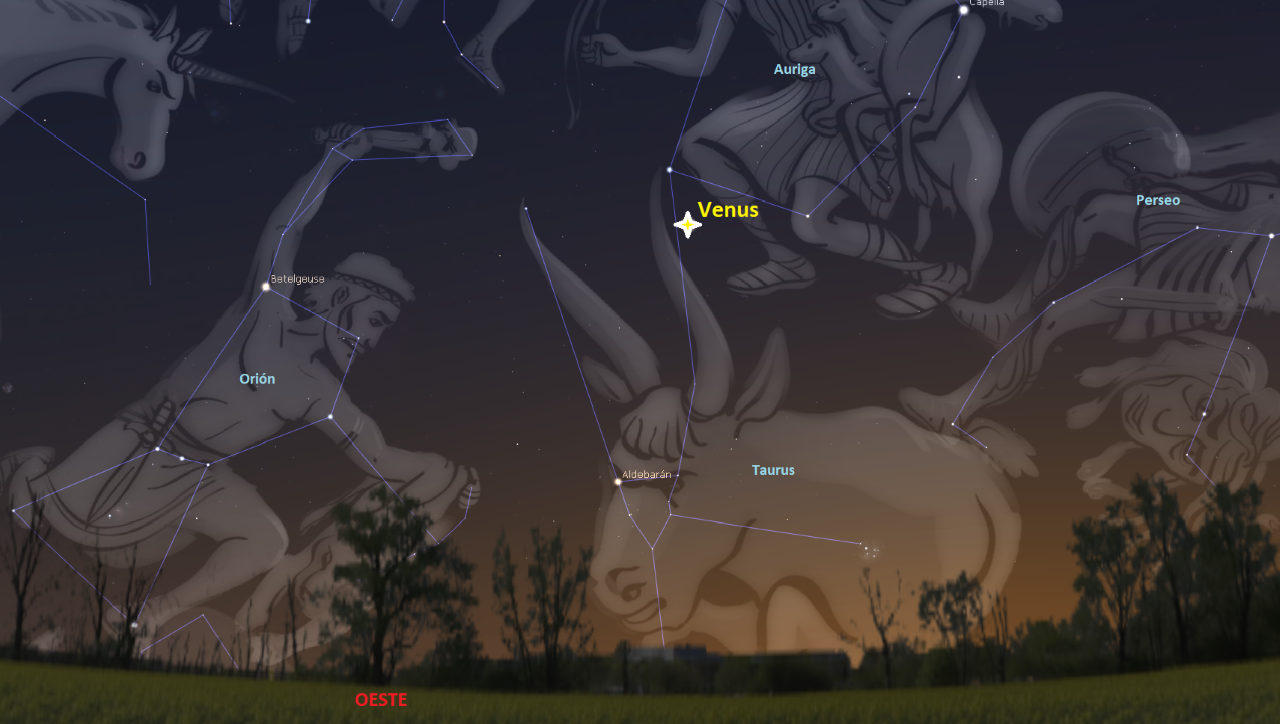- Seasons. 10 curiosities about spring
In this series, the astronomer Rafael Bachiller reveals the most spectacular phenomena of the Cosmos. Topics of pulsating research, astronomical adventures and scientific news about the Universe analyzed in depth.
From our windows to the west, this weekend you can see Venus very bright after sunset. Before dawn, to the east, Jupiter, Saturn and Mars are well aligned on the ecliptic.
Cosmic connection
As we remain entrenched in our homes due to the pandemic, we can remember our cosmic connection by following the movements of the planets through the patches of sky that let us see our windows, balconies, or patios. Let's look up for a while from the screens, on which we spend so much time, to take a look at the sky, where, although discreetly, beautiful events always happen.
This weekend we will be able to see Venus, after twilight, in the west. Because it is a planet that orbits close to the Sun, once the sky has darkened, we see Venus closely follow the same path that the star king traces in the sky as he lies down. Both travel the sky following the ecliptic, that imaginary line on which the objects of the solar system are located and that crosses the zodiac constellations drawn by ancient civilizations. The name of this line, ecliptic, hints that eclipses always occur on it.
Venus in Taurus
Let's look out our window to the west at about 10pm. Venus is now in the constellation Taurus. Below, very close to the horizon that still retains some of the clarity of the twilight, we can see the reddish Aldebaran that marks one of the eyes of the mythological bovine. To the left of Venus, at the top of Orion, we can see how Betelgeuse has already recovered a good part of the brightness it had lost a few weeks ago.
Venus orbits at a distance of about 108 million km from the Sun, while Earth does so at about 150 million km. This difference in the distance to the Sun, and the thick layer of clouds that cover it causing an extreme greenhouse effect, make the surface of Venus a real hell. In its completely barren landscape, the calcined plains alternate with plateaus and volcanoes; the prevailing temperature, which reaches 465 degrees Celsius, is sufficient to melt tin and lead.
Venus rotates in the opposite direction than the other planets in the solar system; that's why there the Sun would be seen rising in the west and setting in the east. Also, the rotation of Venus is very slow: a Venus day lasts 243 Earth days. However, the winds of the Venusian atmosphere are hurricanes and the clouds run very fast in the planet's sky.
Venus is now the brightest star in the night sky (after the Moon): its apparent magnitude reaches a value of -4.8. This high brightness is due to two factors. First of all, Venus is now very close to Earth, only about 65 million kilometers away. Second, the disk of Venus reflects 70 percent of the light it receives from the Sun. This is expressed by saying that its albedo is 70%, a value that is almost double the value of Earth's average albedo (38 %).
Jupiter, Saturn and Mars
If you can catch a glimpse of the sky before sunrise, head southeast around 6:30 a.m., to see an exceptional planetary trio: Jupiter, Saturn, and Mars, in descending order of elevation and wandering south. to the southeast. The three planets are very close to each other (apparently) following the line of the ecliptic. Their magnitudes are -2.3, 0.6 and 0.4, with Jupiter being the brightest and Saturn the least brilliant.
The Moon is in the crescent, a phase it passed exactly on April 30 at 8:38 p.m. We can see it very high after sunset, following its path towards the west, on the horizon of which it hides at around 4 in the morning.
Rafael Bachiller is director of the National Astronomical Observatory (National Geographic Institute) and academic of the Royal Academy of Doctors of Spain.
According to the criteria of The Trust Project
Know more- Science and health
- science
ArcheologyA digital museum to admire the jewels of Egypt found by Spanish archaeologists
Apollo 13A Spanish engineer witnessing the Apollo 13 odyssey: "I saw a beastly escape of oxygen and thought they could die"
EnvironmentForest fires show Chernobyl vulnerability

